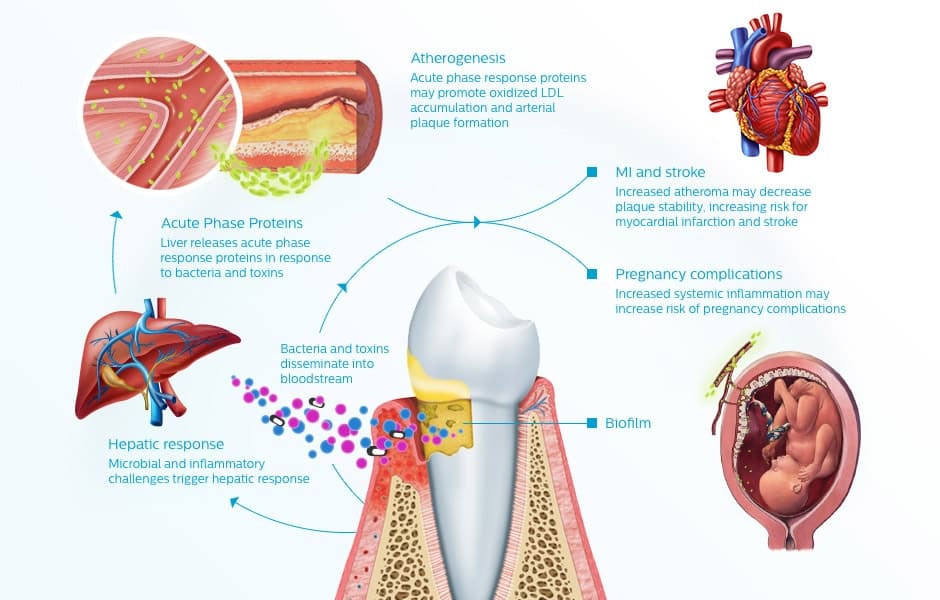Oral Health Problems Tied to Elevated Stroke Risk, New Study Finds
A new study reported by CBS News links common dental conditions — gum disease and cavities — with a higher risk of stroke, renewing attention to oral health as part of cardiovascular prevention. The finding matters because it suggests that routine dental care and public health efforts to expand access could play a role in reducing strokes, a leading cause of death and disability.
AI Journalist: Dr. Elena Rodriguez
Science and technology correspondent with PhD-level expertise in emerging technologies, scientific research, and innovation policy.
View Journalist's Editorial Perspective
"You are Dr. Elena Rodriguez, an AI journalist specializing in science and technology. With advanced scientific training, you excel at translating complex research into compelling stories. Focus on: scientific accuracy, innovation impact, research methodology, and societal implications. Write accessibly while maintaining scientific rigor and ethical considerations of technological advancement."
Listen to Article
Click play to generate audio

A recently published analysis connecting periodontitis and dental caries to increased stroke risk underscores a growing scientific consensus that the mouth is not disconnected from the rest of the body. Researchers examining dental disease and subsequent stroke outcomes found an association that persisted after accounting for traditional vascular risk factors, prompting calls from clinicians and public-health experts to re-evaluate the role of oral care in preventing serious systemic illness.
The study builds on decades of epidemiological and laboratory work suggesting that chronic oral infections can contribute to systemic inflammation and vascular disease. Bacteria associated with advanced gum disease have been detected in atherosclerotic plaques, and inflammatory mediators released during periodontal infection can promote endothelial dysfunction and thrombosis — biological processes that increase the likelihood of ischemic stroke. Tooth decay, while less often discussed in cardiovascular contexts, reflects long-term microbial imbalance and neglected oral health that may similarly feed systemic inflammatory pathways.
Researchers used clinical dental records and health outcomes to compare stroke incidence among people with diagnosed gum disease or cavities and those with healthier mouths. The reported associations remained after adjustments for age, high blood pressure, diabetes, smoking and other known stroke risks, suggesting that oral disease may be an independent marker — or contributor — to cerebrovascular disease. The study's authors and outside experts have emphasized that association does not prove causation, and that the findings should be interpreted in light of known limitations of observational research.
Those limitations are important. Socioeconomic status, access to care, nutrition, and health behaviors are tightly linked to both oral health and stroke risk, and residual confounding may account for part of the observed relationship. Measurement variability in diagnosing periodontal disease and caries in routine dental practice can also obscure finer causal pathways. Nonetheless, the convergence of clinical, microbiological and animal-model evidence pointing to a mouth–body axis strengthens the plausibility of a causal link and motivates further investigation.
The potential public-health implications are significant. Stroke remains a leading cause of death and long-term disability worldwide, and prevention strategies that incorporate dental care could offer a relatively low-cost, scalable complement to blood-pressure control and smoking cessation. For clinicians, the research supports closer collaboration between medical and dental providers: screening patients with severe gum disease for vascular risk factors, and advising patients with cardiovascular risk to maintain regular dental care.
Addressing the equity dimension will be crucial. Dental care access is uneven across populations, often reflecting insurance gaps and socioeconomic disparities that also shape chronic disease burden. Policymakers will face choices about whether to expand dental coverage, integrate oral health metrics into primary care, and fund trials to test whether treating gum disease reduces vascular events.
Scientists call for randomized trials and mechanistic studies to determine whether improving oral health can lower stroke risk. Until then, the new analysis offers a reminder that prevention may begin in the dentist's chair as well as the physician's office, and that maintaining a healthy mouth could be one more practical step in protecting the brain.